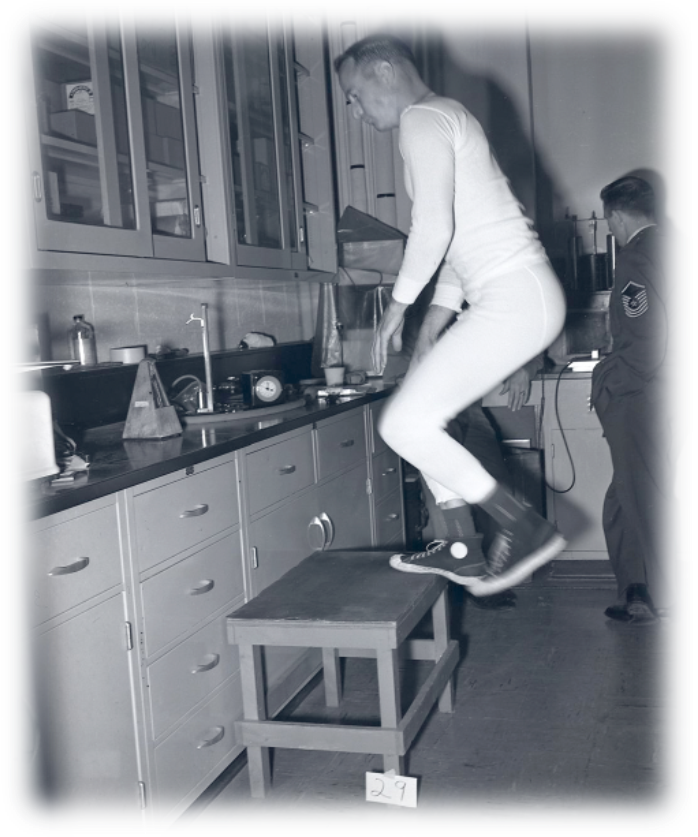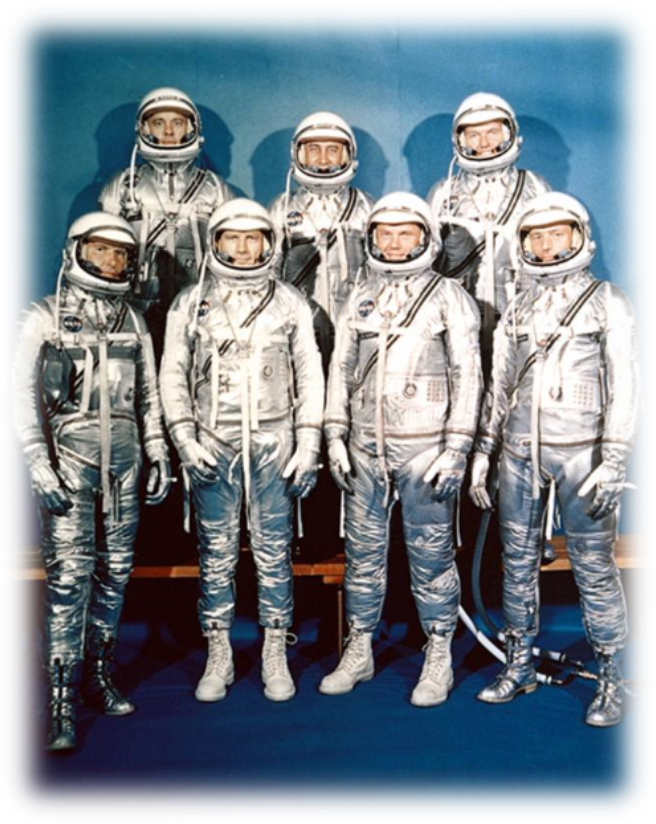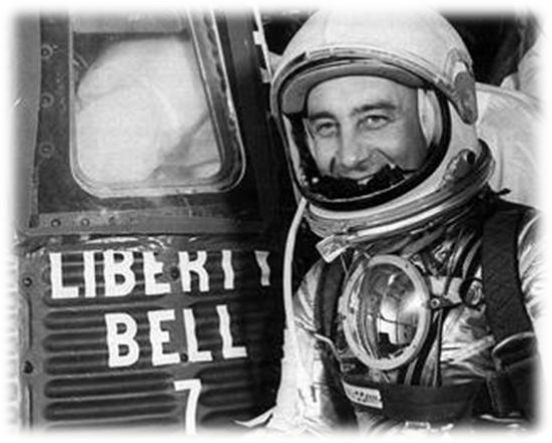Project MERCURY was established in October 1958 with the following objectives:
- Place a manned spacecraft in orbital flight around the earth.
- Investigate man’s performance capabilities and his ability to function in the environment of space.
- Recover the man and the spacecraft safely.
On April 6, 1959, officials announced that seven pilots form the U.S. Armed Services were chosen for Project MERCURY, a program to train the first U.S. space pilots.
After surviving extended physical, psychological and medical testing that reduced the number of astronaut candidates from several hundred to 32, seven men were chosen as America's first space pilots.
 Of those selected were two Air Force pilots from Air Research and Development Command (ARDC) (an antecedent of AFMC) organizations. Capt. Leroy “Gordie” Cooper, Jr., was assigned project engineer for the F-102A and F-106B at Edwards AFB, CA and Capt. Virgil “Gus” Grissom was a test pilot at Wright-Patterson AFB, OH. The other five pilots were: Lt. Cmdr. Walter M. Schirra, Jr., USN; Lt. Col. John H. Glenn, Jr., USMC; Lt. Cmdr. Alan B. Shepard, Jr., USN; Lt. Malcom S. Carpenter, USN; and, Capt. Donald K. Slayton, USAF.
Of those selected were two Air Force pilots from Air Research and Development Command (ARDC) (an antecedent of AFMC) organizations. Capt. Leroy “Gordie” Cooper, Jr., was assigned project engineer for the F-102A and F-106B at Edwards AFB, CA and Capt. Virgil “Gus” Grissom was a test pilot at Wright-Patterson AFB, OH. The other five pilots were: Lt. Cmdr. Walter M. Schirra, Jr., USN; Lt. Col. John H. Glenn, Jr., USMC; Lt. Cmdr. Alan B. Shepard, Jr., USN; Lt. Malcom S. Carpenter, USN; and, Capt. Donald K. Slayton, USAF.
The life of Project MERCURY was a little less than five years, from the time of its official start date to the completion of a 34-hour orbital mission around the earth accomplished by Astronaut “Gordie” Cooper. During this period, much was learned about man’s capabilities in the environment of space. Each of the mission’s seven full-scale flights pushed our understanding of human and technological potential. President John F. Kennedy summed up the philosophy behind Project MERCURY when he said, “We set sail on the new sea because there is new knowledge to be gained and new rights to be won and they must be won and used for the progress of all people.”
Additionally: Gus Grissom served with the 334th Fighter Squadron during the Korean War, where he flew over 100 missions and received the Distinguished Flying Cross and the Air Medal. Once he returned home to the US, he was sent to Wright-Patterson in OH, and then to the famous Edwards AFB in CA. It was there he received his letter to apply for the new MERCURY Program. Grissom later flew the Mercury Liberty Bell 7 mission. The spacecraft was destroyed during the post landing recovery period after premature actuation of the explosive exit-hatch release mechanism. The capsule sank in 15,000 feet of water shortly after splashdown, but without fatalities. Later, however, Grissom, along with Ed White and Roger Chaffee would die in America’s first space tragedy in 1967 when a flash fire swept through their capsule during a training exercise for the first Apollo mission, killing them in mere seconds.
and the Air Medal. Once he returned home to the US, he was sent to Wright-Patterson in OH, and then to the famous Edwards AFB in CA. It was there he received his letter to apply for the new MERCURY Program. Grissom later flew the Mercury Liberty Bell 7 mission. The spacecraft was destroyed during the post landing recovery period after premature actuation of the explosive exit-hatch release mechanism. The capsule sank in 15,000 feet of water shortly after splashdown, but without fatalities. Later, however, Grissom, along with Ed White and Roger Chaffee would die in America’s first space tragedy in 1967 when a flash fire swept through their capsule during a training exercise for the first Apollo mission, killing them in mere seconds.
Printable document: Project MERCURY